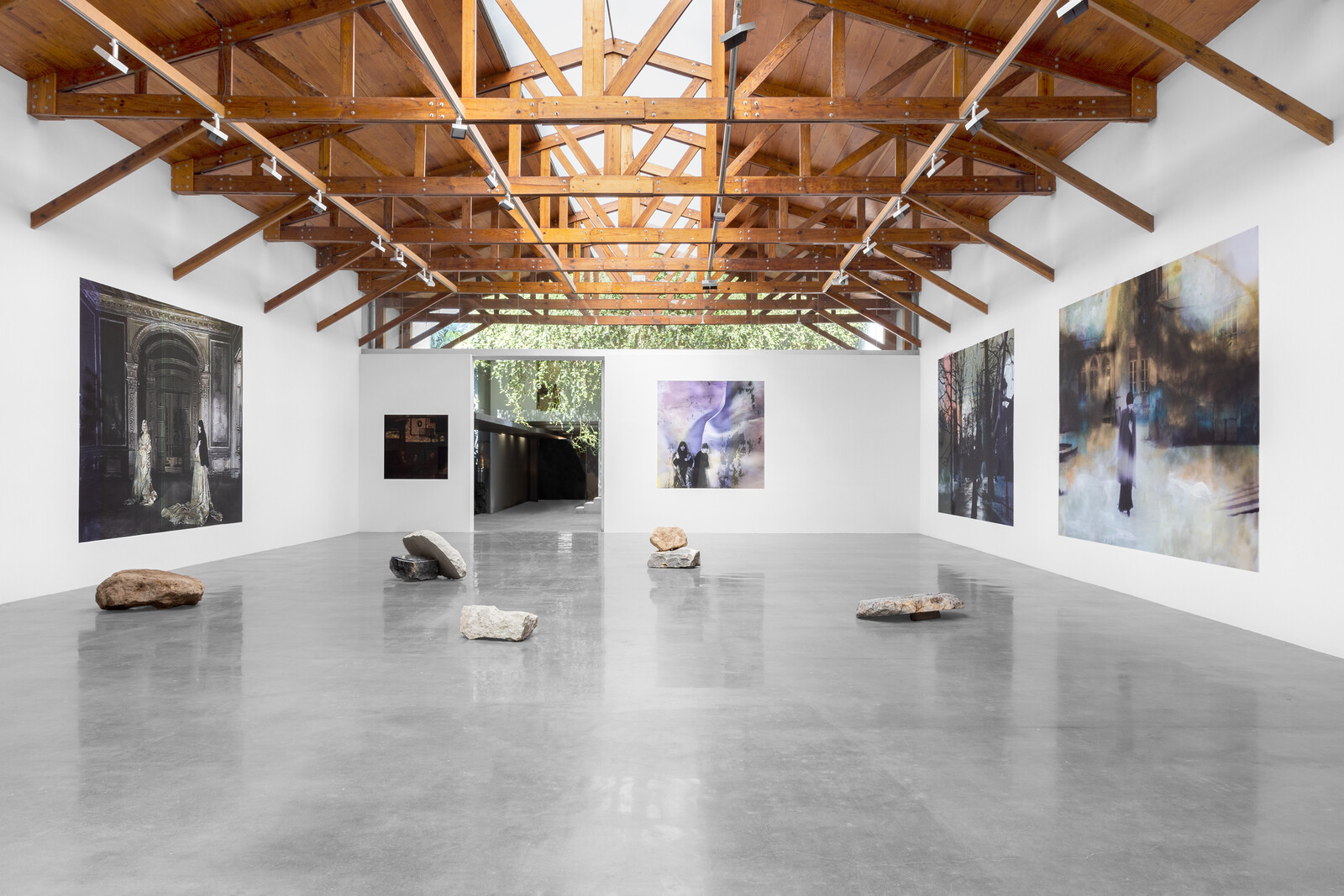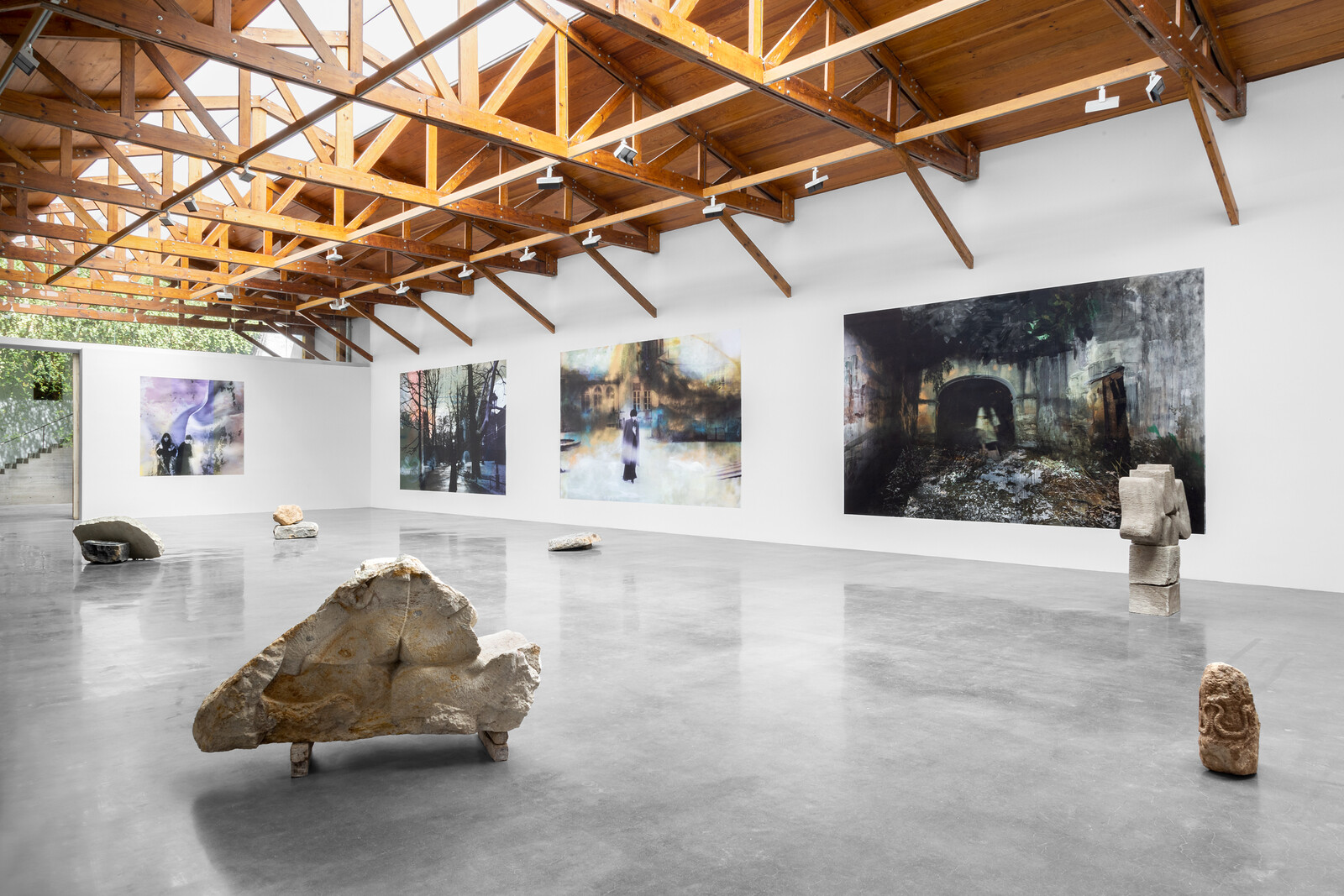Resonance
With the photographic archive of Deborah Turbeville
March 25–May 20, 2023
Gob. Rafael Rebollar 94, Colonia San Miguel Chapultepec
11850 Mexico City,
Mexico
The first exhibition in Mexico by artist Paulina Olowska, Resonance, gathers a series of works made in situ and others prepared during the artist’s previous travels to Mexico.
Paulina Olowska often works with references from the past that appear in her pieces as ghosts and apparitions, vibrations of another era that interfere with her pictorial creations. In Resonance, Olowska makes direct reference to the archive of artist and fashion photographer Deborah Turbeville from MUUS Collection. Turbeville’s photographic sessions in Poland and in Mexico in the ’80s and ’90s inspired Olowska to recreate some of the scenes and respond to many of the mysterious and fleeting images in her work.
“What I share with Deborah is a certain melancholia for fashion. That fashion has a symbolic dimension also connected to womanhood. But what she did with fashion is like what she did with photography –she distressed it, distanced it, she used it in metaphoric senses to bring it back to historical figures and places.” says the artist
In search of traces from Turbeville’s visit to Mexico in 1989, Olowska travelled there in 2022 and collaborated with painter and muse Carmen Serratos and photographer Karla Ximena Cerón. Together they reactivated and performed tableaux vivants in different sites in connection to Tuberville’s residence in San Miguel de Allende, where she had bought an 18th century house (currently called Casa No Name), and the mining ghost town of Mineral de Pozos to recreate and reimagine scenes from the fashion photographer’s imaginary among the ruins, the opuntia cacti and the abandoned cemetery.
Later on in Kraków, Olowska photographed the Potocki Palace where Turbeville worked on an award-winning fashion shoot for W Magazine in 1998 as well as the Tadeusz Kantor Theater and the Michalik Cave, a 19th century cabaret. During this journey to the sites of the artist’s past Olowska recreated Turbeville’s images with photographer Jacqueline Sobiszewski. With images collaged out of these new visual references and materials, Olowska recomposes additional scenes directly on the gallery walls in collaboration with Wanda, a wall printing robot.
For Resonance, Olowska expands her practice beyond painting, working with the stone mason workshop of Joel Arrieta in Mexico to carve images evoked from Turbeville’s photographs into several limestone sculptures. These new works on view are exhibited alongside a selection of original archival materials from MUUS Collection showing Turbeville’s trips to Mexico and Krakow.
kurimanzutto would like to thank MUUS Collection for their support of this project.
About the artist
Paulina Olowska was born in 1976 in Gdansk, Poland, and lives and works in Rabka Zdroj, Poland. She is currently doing an artist residency in Athens, Greece and has had one-person exhibitions at Kunsthalle Basel; the Stedelijk Museum, Amsterdam; and the Zacheta National Gallery of Art, Warsaw.
Olowska received the prestigious Aachen Art Prize in 2014, with an associated exhibition at the Ludwig Forum for International Art, Aachen, Germany. She has also staged performances at Tate Modern, the Carnegie International, and the Museum of Modern Art, New York.
She presented the ballet “Slavic Goddesses—A Wreath of Ceremonies” at the Kitchen, New York, in 2017 and “Slavic Goddesses and The Ushers” at the Museo del Novecento in Milan in 2018. Her work was featured in the 2017 National Gallery of Victoria Triennial in Melbourne and the 2018 Liverpool Biennial, as well as in group exhibitions at the Museum of Modern Art, Warsaw; mumok, Vienna; Hamburger Kunsthalle, Hamburg; Migros Museum Für Gegenwartskunst, Zürich; and the New Museum, New York.
About Deborah Turbeville
Deborah Turbeville was an American artist and photographer born in Stoneham Massachusetts in 1932. Turbeville moved to New York and was discovered by the American fashion designer Claire McCardell, who hired Turbeville as an assistant and house model. While working for McCardell, she met Diana Vreeland, then the famed editor of Harper’s Bazaar; their introduction eventually led to Turbeville being offered a job as an editor at the magazine.
Disinterested in the editorial work she was doing at Harper’s Bazaar and later at Mademoiselle, she purchased a Pentax camera in the 1960s and began experimenting with photography, ultimately enrolling in a workshop taught by photographer Richard Avedon and art director Marvin Israel in 1966. Following their tutelage, she began her career in photography, primarily working for fashion magazines like Vogue, Harper’s Bazaar, and Mirabella, though she didn’t consider herself a fashion photographer.
Turbeville died in 2013, having left an indelible mark on the world of photography; she is often credited with transforming fashion imagery into avant-garde art. Her work is collected by esteemed institutions including the Whitney, Getty, Centre Pompidou, and Victoria & Albert museums among others.









